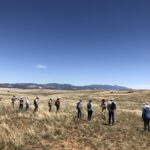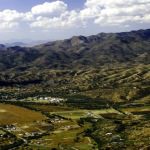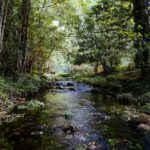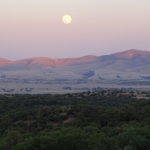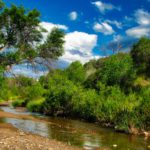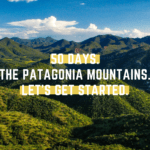The Patagonia Area Resource Alliance is working to stop industrial mining in the Patagonia Mountains. We are very concerned about protecting and preserving the town’s water supply. Part of our mission also includes promoting the local tourism-based economy to our surrounding public lands and parks. The interesting thing that I’ve discovered while working for PARA is that our mission overlaps or complements the mission of many other organizations both local and national. Given that we’re on the Mexican border, I can say international organizations too! One of those organizations that complements our work is Wildlands Network.
John Davis with Wildlands Network is hiking the Western Wildway of the continent from Mexico to Alaska to promote awareness of the need for wildlife corridors. The Western Wildway is a 6,000-mile-long wildlife corridor that includes Mexico, the United States and Canada. According to their website, “protecting the Western Wildway represents North America’s best chance to ensure the survival of many threatened keystone species that require long-distance movement pathways, including grizzly bear, lynx, mountain lion, wolves, jaguars, and ocelots — all faced with growing pressure from development-based habitat fragmentation and climate disruption.” Learn more at www.trekwest.org
John Davis recently traveled through Patagonia, Arizona. PARA got the opportunity to show him the area in the Patagonia Mountains that is being threatened by Wildcat Silver’s proposed open pit mine. Accompanied by Matt Clark from the Southwest office of Defenders of Wildlife and Sergio Avila from Sky Island Alliance, we climbed American Peak in the Patagonia Mountains. We discussed how the wildlife corridor for jaguars, ocelots, bears and mountain lions through the Patagonia Mountains would essentially be blocked by the proposed Wildcat Silver mine. At the top of the peak, we could see into Mexico. The Patagonia Mountains are only one of two sky island mountain ranges that cross the border into Mexico. Sergio Avila quoted a study that showed that our bear population in the Patagonias is more closely related to bears in Mexico than they are in the nearby Santa Rita Mountains. The bird’s-eye view from the top further demonstrated the importance of the Patagonia Mountains as a wildlife corridor and the vast area of the mountains that would be impacted by Wildcat Silver’s proposed open pit mine, tailings piles, waste rock, tailings ponds and processing plants. Open pit mining operations and wildlife corridors cannot coexist.

Sergio Avila with John Davis on American Peak.
Photo ©Glen E Goodwin
We were thankful for the opportunity to bring our mission to stop mining in the Patagonia Mountains to the attention of an international organization with a complementary mission to keep North American wildlife corridors open. There are so many good reasons to keep open pit mining out of the Patagonia Mountains. Keeping vital wildlife corridors open is another one.
Wendy Russell


